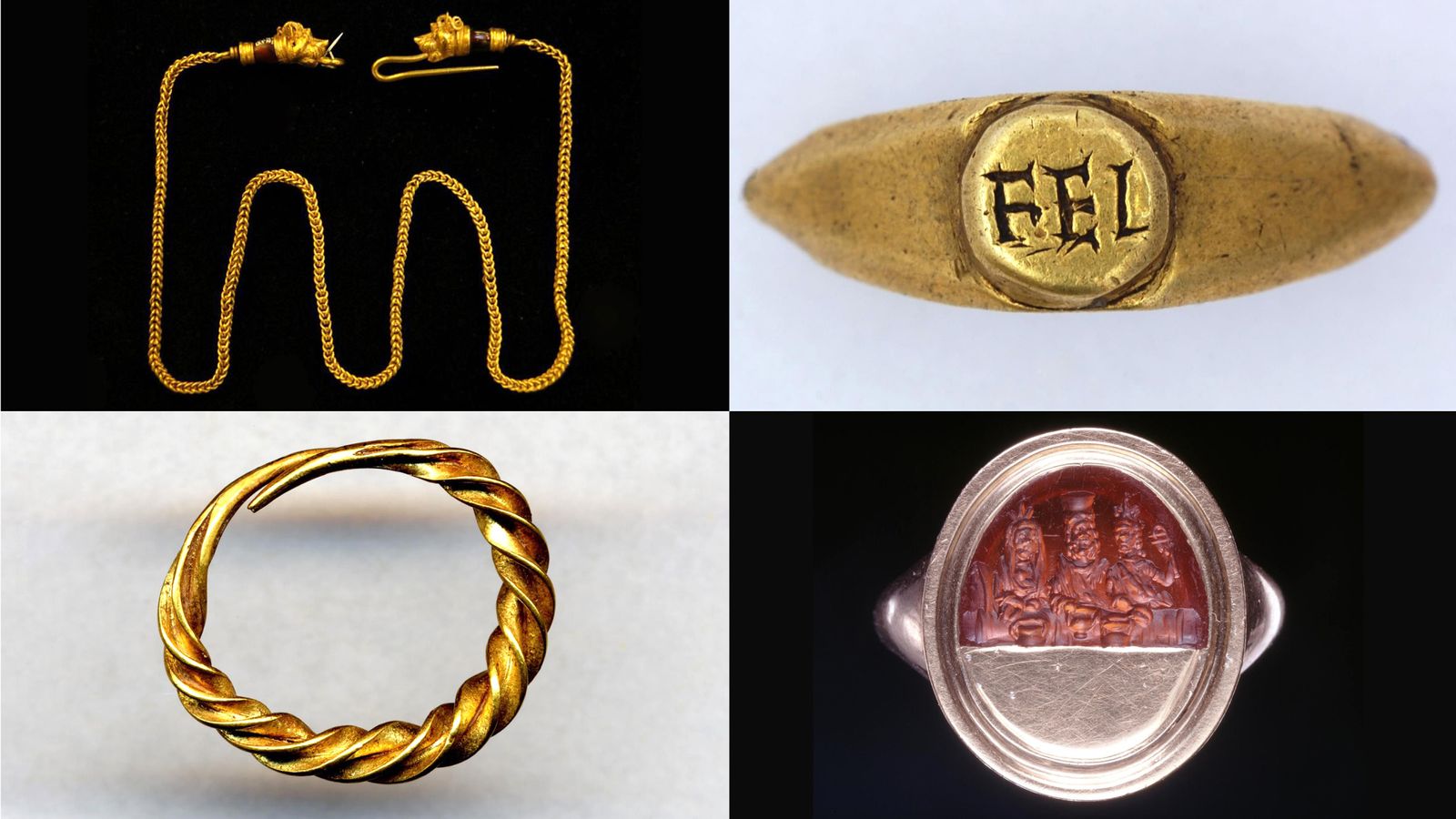The British Museum has revealed the types of items believed to have been stolen from its collection.
The museum said the vast majority of items were from the gems and jewellery collection, and are mostly from Greece and Rome.
Images provided by the museum are only similar to those that are missing, and are still in the collection.
They include:
• Classic Greek and Roman gems
• Gold rings
• Earrings
• Bracelets
• Necklaces
Some of the jewellery is believed to date back to the Late Bronze Age (about 15th to 11th century BC) and the Hellenistic and Roman periods.
Gems, cameos or intaglios were described by the museum as small objects often set in rings or left unmounted.
They can be made of semi-precious stone or glass and can feature mythological scenes, animals or objects which could have been hand carved into them, or produced from a mould.
Back in August, the museum said items from its collection were “missing, stolen or damaged” and a staff member had been sacked.
An estimated 2,000 artefacts had been taken, according to museum chairman and former chancellor George Osborne.
“Someone with knowledge of what’s not registered has a big advantage in removing some of those items,” he said at the time.
The museum has now said “60 items have been returned, with a further 300 identified and due to be returned imminently”.
In the fallout of the items going missing museum director, Hartwig Fischer, resigned from his position along with his deputy, Jonathan Williams.






















